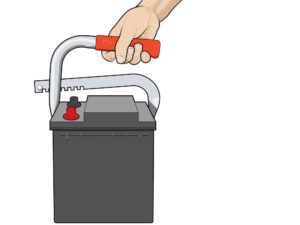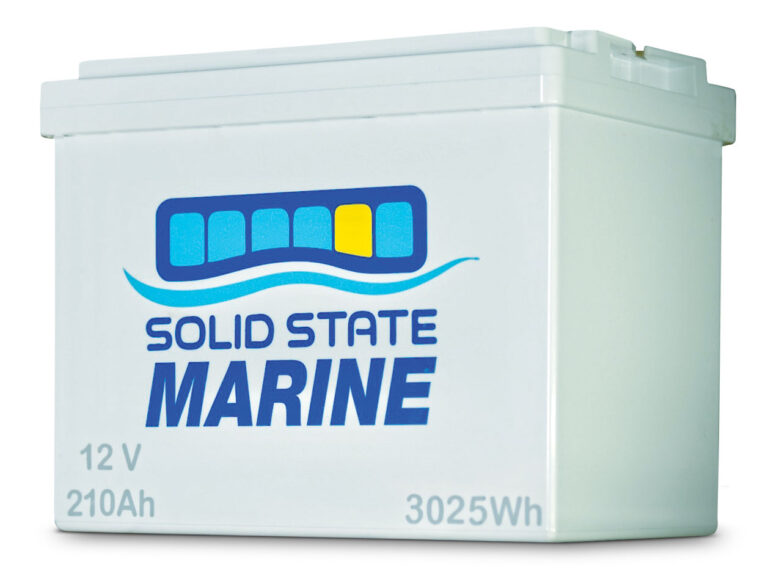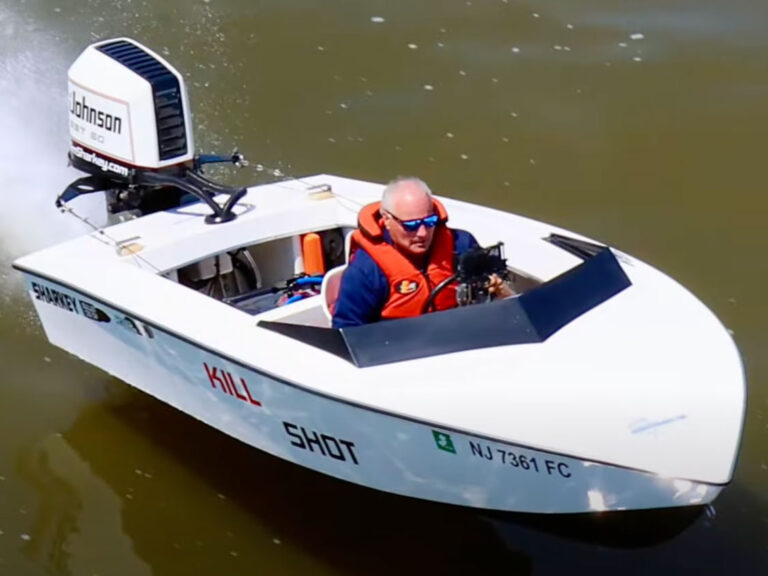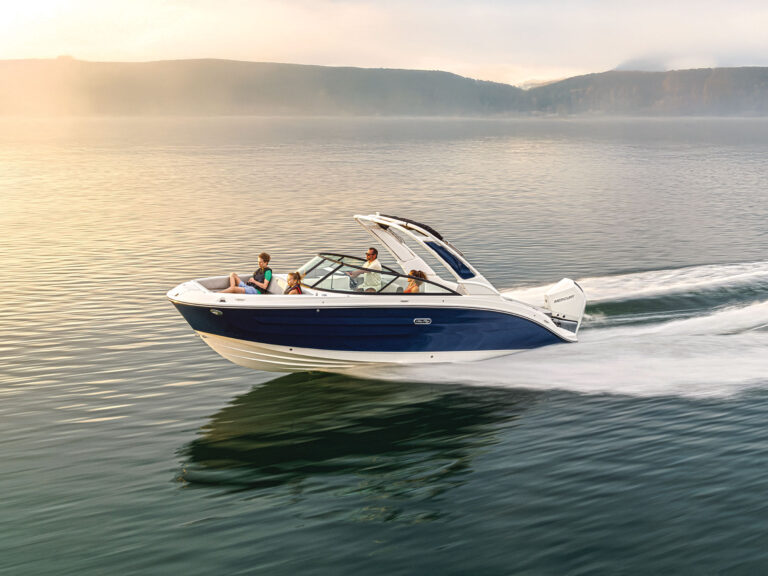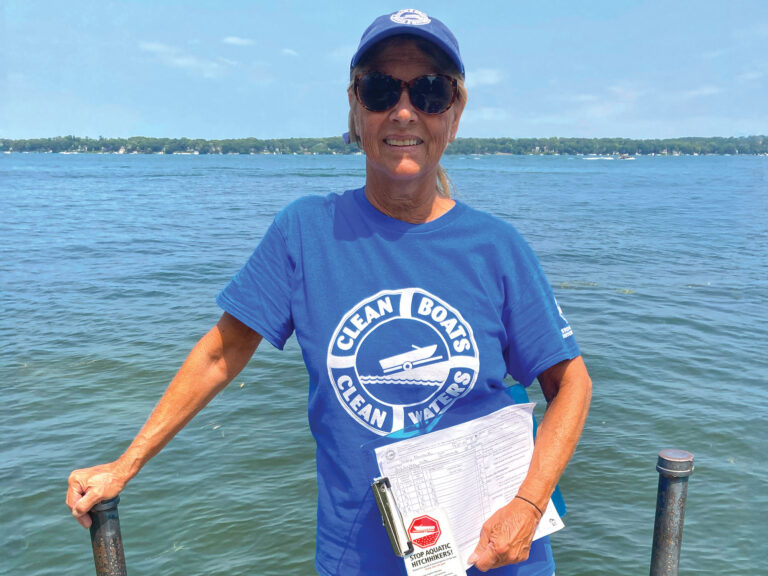Here are the most common boater screw-ups that consistently cause a fistful of trouble — money trouble. It’s too bad, really, because a little forethought and preparation can make boating trouble-free and economical.
1. Failing to Inspect or Change Fuel/Water Separators (You do have a 10-micron fuel/water separator between your tank and engine, right?)
What It Does: Fuel/water separators remove moisture from fuel before it gets to the engine. Outboard water separators have a “sight glass” in the bottom to allow inspection for water without draining them through the petcock on the bottom.
Result Of Neglect: Water vapor collects in gas and travels to the engine, where, because it isn’t compressible and combustible like fuel vapor is, it can blow rings out of the pistons or cause piston rod and/or crankshaft failure.
Cost To Perform: Changing a fuel filter in your driveway costs about $30. Adding a fuel/water separator to the fuel line can cost a driveway guy $125, and a mechanic may charge $250 — still cheap insurance against ethanol fuel’s ability to introduce water to your engine.
Penalty: You’re usually looking at a new power head or engine block. Think five digits per engine.
2. Not Changing Gear-Case Lube
What It Does: Changing gear-case lube regularly — usually every 100 hours and again for winterization — maintains optimal lubricity and also gives a heads-up on developing problems, such as leaking seals or eroding gears.
Result Of Neglect: Moisture and condensation can erode lubricity and damage gears. Worse, you might not discover leaking seals in time to save the gear case from catastrophic failure.
Cost To Perform: You can change gear-case lube easily in your driveway for $30.
Penalty: A new gear case can cost as much as $5,000.
3. Neglecting to Change Spark Plugs
What It Does: Spark plugs ignite the fuelair mixture in the fuel when they’re clean, properly gapped and serviceable.
Result Of Neglect: Spark-plug contacts (electrodes) erode over time — especially in outboards. As the gap widens with use, the spark plug fails to ignite the fuel-air mix, resulting in fouling. Fuel economy and performance suffer first, but if a bad plug remains, sooting can destroy the engine.
Cost To Perform: Spark plugs for a V-6 outboard can cost $10 each and up. Changing them requires only a socket wrench and 40 minutes.
Penalty: An outboard power head can cost $6,000 to $10,000.
4. Forgetting to Check the Oil
What It Does: Oh, yeah, boaters neglect this all the time. Checking the oil is necessary every time you use your boat. Non-use of boats can cause seals and gaskets to fail as they dry out. This can accelerate oil leaks.
Result Of Neglect: Going to sea with a twoquart oil shortage can damage valves, rocker bearings or cranks — and very quickly at the high rpm ranges where boats run.
Cost To Perform: Free! Plus maybe 12 bucks for a quart of marine oil.
Penalty: Lose a power head or engine block and shell out $10,000 or more.
5. Running on a Damaged, Out-of-Balance Prop
What It Does: Props turn the energy of the engine into propulsion by pushing and pulling on the water. When they are undamaged, they spin smoothly with no vibration.
Result Of Neglect: Ding, dent or knick one badly enough and it will vibrate even though it may still push the boat. You may or may not be able to feel the vibration, but it will cause shaft “cancer,” shake the shaft, erode the seals and maybe even damage bearings and gears.
Cost To Perform: Replacing a prop can cost most boaters up to $500, maybe more, for stainless steel. But a prop shop can often rebuild the nicks or gouges, straighten the blades and eliminate the vibration for half or less than the amount.
Penalty: Keep on spinning that damaged wheel and plan to buy a new gear case and a prop to boot, spending up to $6,000.
6. Running the Battery Down
What It Does: Batteries are made to burn while starting the engine and running lights, engine electronics, marine electronics and stereos, but most batteries are destroyed at the dock during storage. Keep an automatic charger on the batteries to keep them fresh.
Result Of Neglect: Batteries that should last three years won’t last one year if you fully discharge them even a few times a season.
Cost To Perform: Add a Pro- Mariner 20 single-cell charger ($170, overtons.com) to keep your starting battery fresh and conditioned. Plug it in whenever your boat is in storage to keep it topped off.
Penalty: Don’t condition-charge and you’ll buy a new battery every season. Keep batteries charged and save the cost of the charger over three years — and end those embarrassing moments at the dock.
7. Not Flushing Salt Water from the Engines
What It Does: Many engines take in cooling water from the sea. The water works great. There is a ready supply of it, but it’s corrosive.
Result Of Neglect: If you leave that salty water in the engine when you store your boat, it can corrode and block the engine’s cooling jackets, destroying it.
Cost To Perform: Free! Yamaha technicians say one of the biggest causes of engine failure is failing to hook up a garden hose to the engine and flush it with fresh water.
Penalty: Buy a new outboard in three years (if you’re lucky) instead of 10 or more.
8. Forgetting to Service the Water Pump Regularly
What It Does: The pump impeller is made of a flexible, rubber-like material that degrades over time. Changing it ensures water flow, but equally important, changing it regularly ensures that the screws that hold the gear-case housing together do not corrode and lock tight.
Result Of Neglect: The most obvious and immediate effect is an overheating engine, which will at best end your boating day, and at worst burn up your engine.
Cost To Perform: It can cost $200 to $300 to have the water pump rebuilt by a professional. If you’re handy, you can do it in your driveway for $100 or less.
Penalty: Even if the water pressure gauge indicates all is well on a threeyear- old pump, those screws might be welding the gear case together. If they do, you’ll replace the gear case for thousands, not hundreds, of dollars.




